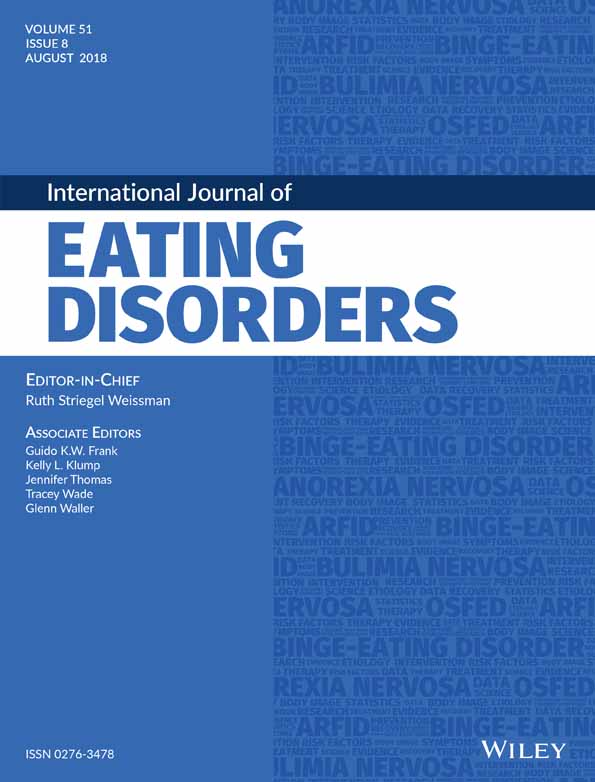Targeting body dissatisfaction among women with overweight or obesity: A proof-of-concept pilot study
Funding information: NIH (National Center for Advancing Translational Sciences); Grant Number: UL1TR001070; Society for Health Psychology Graduate Student Research Award; American Psychological Association Graduate Dissertation Award; The Ohio State University (OSU) Alumni Grant for Graduate Research and Scholarship; OSU Presidential Fellowship; OSU Arts and Sciences Undergraduate Research Scholarship.
Abstract
Objective
This proof-of-concept study was designed to replicate the effects of the empirically-supported Body Project intervention on body dissatisfaction when combined with behavioral recommendations for weight loss among women with overweight or obesity.
Method
Women with overweight or obesity who reported body dissatisfaction and a desire to lose weight were randomized to one of two 4-week treatment conditions. Individuals assigned to the standard group (n = 15) were directed to track diet and activity level daily. Body project (n = 17) participants tracked daily diet and activity, in addition to attending four weekly, group-based body project intervention sessions. Body mass index, body dissatisfaction, body appreciation, and internalization of thin ideal and weight stigma were evaluated before and after the treatment period.
Results
Feasibility data suggest the Body Project can be implemented with this novel sample. Preliminary estimates suggest greater effects on body appreciation in the Body Project group than in the standard group (ES = 0.43), but no group effects for other body image variables.
Conclusions
With minor modifications, the Body Project was successfully implemented among women with overweight or obesity. The effect on body appreciation is encouraging and worthy of further investigation. Modification to the intervention may be necessary to enhance treatment effects on other body image variables.




